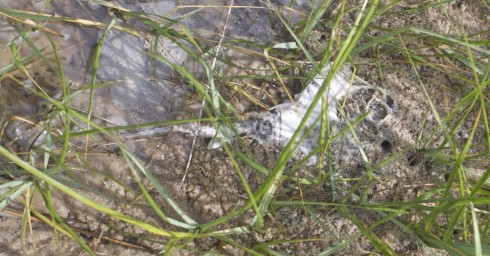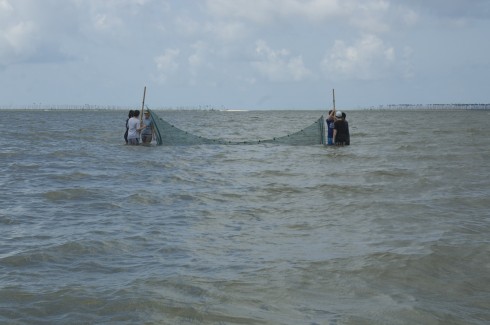
After surface sampling with the dip nets, and subsurface sampling with the little corers, we tried sampling the water column using a small seine.
Seining requires teamwork, and I was pleased to see everyone working well together, focused on the job at hand.
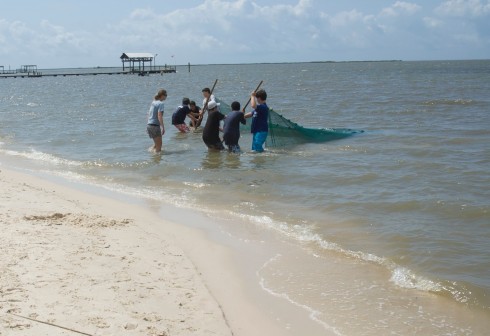
Hauling on the nets, with the smell of salt in the air, resurrected long neglected memories of fishermen at work on tropical, Atlantic beaches. Back then they were going after fish for the market, here, with our much finer meshed net, we were looking for anything interesting in the water column.
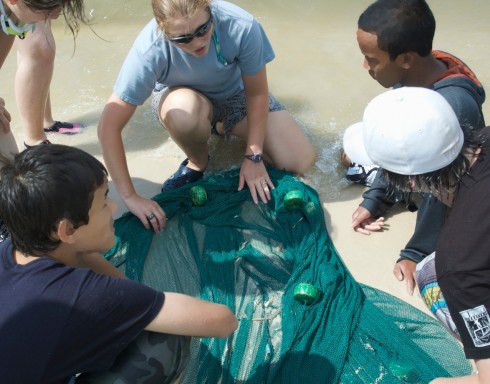
Everyone got touch a ctenophore (comb jelly), which I will note is not a jellyfish, and is also not poisonous.

Students also had a chance to hold a croaker (a fish of the family Sciaenidae), and feel it croak.

Our guide was great. She was quite knowledgeable about the fauna we ran into, and very good at sharing information.
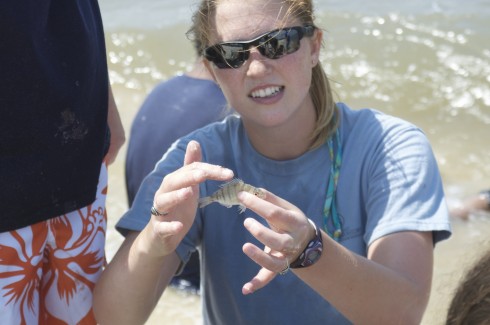
Interestingly, we were not the only ones out seining that morning. There was a small group from the research lab looking for skates for a research project. I think they said that this was their third time out looking, but like us, they did not find any elasmobranchs (not counting the one dead specimen we ran into while dip netting).
